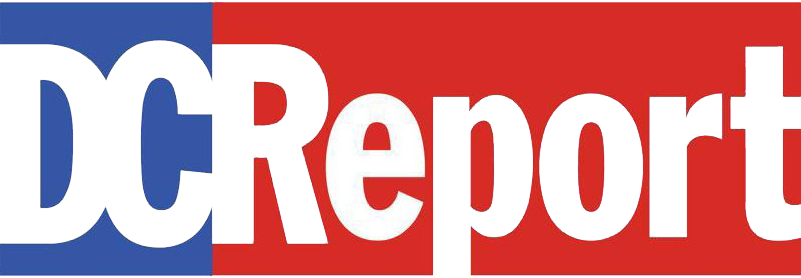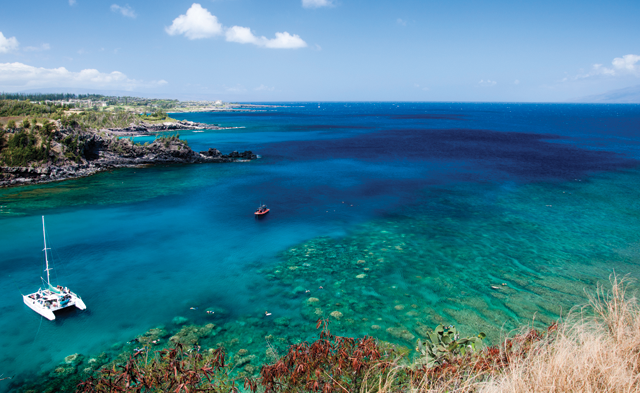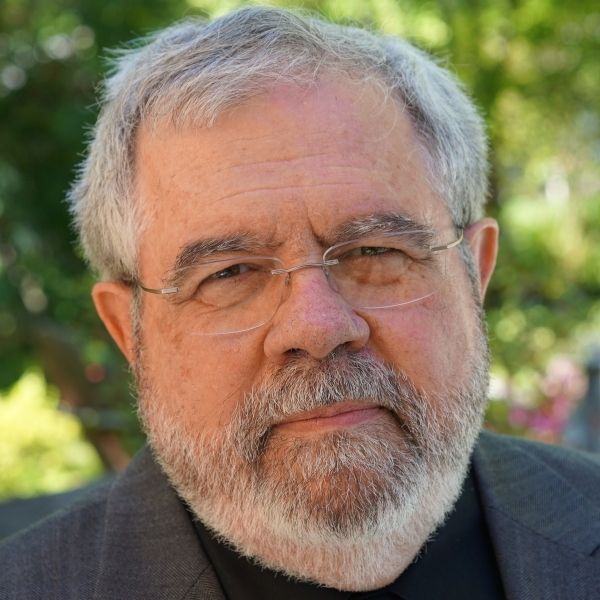Going Underground to Foul the Pacific and Undercut the Clean Water Act
If you like sewage, chemical wastes or radioactive molecules in your drinking water the Trump Administration has your back. It’s part of Team Trump’s determined efforts to remake the Environmental Protection Agency into the Environmental Pollution Agency.
Soon the U.S. Supreme Court, urged on by Team Trump, may give its stamp of approval to effectively undo many benefits of the 1972 Clean Water Act in a case from the Hawaiian island of Maui.
Environmental groups are seeking to stop Maui County from injecting pollutants into the ground, where they mix with groundwater and then flow to the ocean. The groups say the practice evades current pollution laws that bar the fouling of surface waters. The Trump Administration, reversing the Obama Administration’s stance, is on the polluters’ side.
The Supreme Court, with two Trump appointees, has fast-tracked the case.
If Team Trump and its allies win, polluters will just replace permitted drains at rivers, lakes and the sea with unpermitted wells that inject pollutants directly into groundwater.
Depending on how the high court rules, America may return to the century-long corporate dumping that repeatedly set Ohio’s Cuyahoga River on fire, an era of unchecked polluting that made two-thirds of surface freshwater dangerous to drink, many rivers and lakes were not even safe for swimming.
The question before the Supreme Court: Does the Clean Water Act require a permit when pollutants originate from a point source like a drain but flow to navigable waters via a nonpoint source, such as groundwater?
Maui County argues that pollutants discharged from a drain that flows into a groundwater supply are not subject to the rules for permits for drains and other point sources even though most of the pollutants eventually reach the ocean.
ACTION BOX/What You Can Do About It
Tell EPA Administrator Andrew Wheeler your thoughts on the Clean Water Act. Call Wheeler at 202-564-4700 or write to him at EPA Headquarters / William Jefferson Clinton Building / 1200 Pennsylvania Ave., NW / Mail Code: 1101A / Washington, D.C. 20460.
Contact the Hawaii Wildlife Fund, which brought the case now before the Supreme Court. Hannah Bernard, the executive director, is at [email protected] and (808) 280‐8124. The organization’s webpages are at www.wildhawaii.org.
If Team Trump and its polluting allies win, government documents show, polluters will have an easy way to get rid of pollutants. Just replace permitted drains at rivers, lakes and the sea with unpermitted wells that inject pollutants directly into groundwater.
The Trump EPA’s policy would “create perverse incentives for polluters to evade regulation and enforcement under the Clean Water Act by discharging pollutants in basins or wells near navigable waters, where groundwater will predictably and directly convey the very same pollutants to the adjacent or surrounding connected surface waters,” according to the Waterkeeper Alliance, whose 340 nonprofit member organizations work to protect public health and the nation’s waterways from dangerous pollution.
‘Misguided and Unlawful’
The Alliance described the Trump administration’s interpretation of the Clean Water Act as “a draconian and extreme reinterpretation…[and a] misguided and unlawful effort to completely reverse” decades of practice that have reduced water pollution.
Discharging polluted water into the ground without a permit is supported by the Family Farm Alliance, which says its mission is “protecting water for Western irrigated agriculture.”
Some opponents who favor the Trump EPA approach claim that the current understanding of that law is part of a plot to destroy American commerce.
After a third of Northern California’s Klamath River salmon run was wiped out in the summer of 2002, the Family Farm Alliance president, Bill Kennedy, wrote an unhinged attack on environmental organizations trying to protect the salmon and promote sustainable forestry. He asserted that they “want to destroy our production, our infrastructure and our communities. … Once our industry has been abandoned in favor of imported food and fiber, our nation will be at the mercy of countries with socialist agendas.”
Despite such extremist rhetoric, agriculture groups legitimately worry that requiring permits to discharge pollutants into groundwater could create new headaches for farmers and for regulators. The Trump administration approach is not to balance these interests or seek new legislation, but instead to blindly argue the unlimited pro-pollution case.
If you haven’t learned in the mainstream news about this major development affecting your health and safety, we at DCReport are not surprised. At DCReport we cover what Trump is doing to our government, not what Donald tweets. And we work to tell you what the administration, Congress or courts are up to before its carved into law so you can take action to make our democracy responsive to all of us.
Coal Ash Ponds
The Supreme Court decision could also affect electric utilities which own hundreds of coal ash ponds. Toxic metals leach from these toxic slurries into rivers used for drinking water. When pond dikes collapse, as some have, multitudes are forced to drink bottled water for months and may not even be able to wash clothes safely.
At DCReport we have reported extensively on dangers that the 19th Century technology of coal ash ponds poses to people and wildlife. You can read about how Team Trump wants to increase pollution from burning coal, which would mean more deaths from cancer and heart disease along with devastating destruction of fish and aquatic life as we reported here, here, here, here, here, and, in a smidgen of good news for the environment, here.
On the surface the issue before our Supreme Court is local and modest. Dig into the record, however, and profound and scary implications for all of America become clear.
Each day four million gallons of treated effluent from a sewage treatment plant for 40,000 people in Maui is pumped into the ground. There it mixes with natural groundwater. Putting a tracer dye into the effluent showed that 64% of the treated sewage flows underground into the ocean.
The Clean Water Act, signed by a Republican president, Richard Nixon, protects “surface waters” from polluters.
Maui County officials operate on the theory that the sewage discharge into the ground is similar to storm water runoff and other so-called non-point discharges which are not subject to the Clean Water Act requirements for permits to discharge pollutants.
Maui County treats sewage and then injects it into the ground through a Class V sewage injection well.
According to an EPA advisory, posted on the internet in 2015 under the Obama Administration, “Class V wells are a concern because they pose a risk to underground sources of drinking water.”
The Hawaii Wildlife Fund and other environmental groups sued Maui County over its wells. They say a discharge permit is required because in terms of water flow there is no difference between a drain that dumps toxics directly into surface waters and a drain that dumps toxics into the underground rivers and aquifers that flow into surface waters.
As water geologist Barbara Siems wrote to the Environmental Protection Agency when it took its first step to help water polluters in 2018: “It makes no sense that pollution dumped directly into a waterbody requires a permit but pollution buried just a few feet away that then travels into that waterbody does not. Both circumstances result in polluted water that jeopardizes our health and both should be regulated. Reversing EPAs interpretation of its responsibility now would be illegal and would expose our waters to unchecked pollution. The EPA must continue to hold industries accountable for dumping chemicals and other pollutants into groundwater that flows into our nations rivers, lakes, streams and bays.”
Opposition Across the Spectrum
Conservation and environmental organizations oppose the Trump Administration and Maui County.
Trout Unlimited, which represents 300,000 anglers, filed a brief noting that the Clean Water Act “was designed to ‘restore and maintain the chemical, physical, and biological integrity of the Nation’s waters’ and “to achieve water quality that ‘provides for the protection and propagation of fish, shellfish, and wildlife.’”
Unless a polluter has a permit “any addition of any pollutant to navigable waters from any point source” is prohibited, Trout Unlimited noted.
A similar argument was made by the Fond Du Lac Band of Lake Superior Chippewa, who said their livelihoods depend on limiting industrial pollution of water they fish to eat and sell.
And 37 professors who teach environmental and natural resources law filed a brief saying that if the Maui County position is upheld then all polluters “could evade the Act simply by adding pollution from their point sources to navigable waters through groundwater, air, or soil, thereby doing indirectly what the Act directly prohibits: degrading surface water quality with impunity.”
Three former EPA administrators filed a friend of the court brief opposing Maui County and the Trump administration. William Reilly (George H. W. Bush), Carol Browner (Clinton) and Gina McCarthy (Obama) told the Supreme Court that the Clean Water Act “does not regulate the quality of groundwater; all parties agree that Congress left the regulation of groundwater… primarily to the States.”
However, they said, “regulating any addition of pollutants from point sources to surface waters” is covered by the Clean Water Act discharge permit requirements.
Congress, the former EPA administrators said, “has repeatedly confirmed that the [Clean Water Act] covers the discharge of pollutants from point sources to surface waters via groundwater.”
That is the same point made by Justice Antonin Scalia in a 2006 case in which a Michigan developer was criminally prosecuted for filling in Lake Huron marshlands. Scalia noted that the Clean Water Act prohibits the “addition of any pollutant to navigable waters.” His point was that whether a drain directly dumps into surface waters or gets it there indirectly is of no consequence as the Clean Water Act applies in all such cases.
Trump Helps Polluters
In early 2018, the EPA took its first step to creating a way for polluters to dump wastes without permits by injecting them into the ground. Under the Clean Water Act pollutant means “dredged spoil, solid waste, incinerator, sewage, garbage, sewage sludge, munitions, chemical wastes, biological materials, radioactive materials, heat, wrecked or discarded equipment, rock, sand, cellar dirt and industrial, municipal, and agricultural waste discharged into water.”
That first step prompted 58,350 comments, including the cogent one quoted above from geologist Siems.
Most such notices in the Federal Register attract few comments and then primarily from corporations or state and local agencies with a direct economic interest in an issue. At DCReport we scrutinize the Federal Register, which hardly any Washington reporters read even though it is “the Daily Journal of the United States Government.”
Featured image: Polluted Honolua Bay, Maui, a designated marine life conservation district. (Hawaii Savvy/Flickr Creative Commons)





